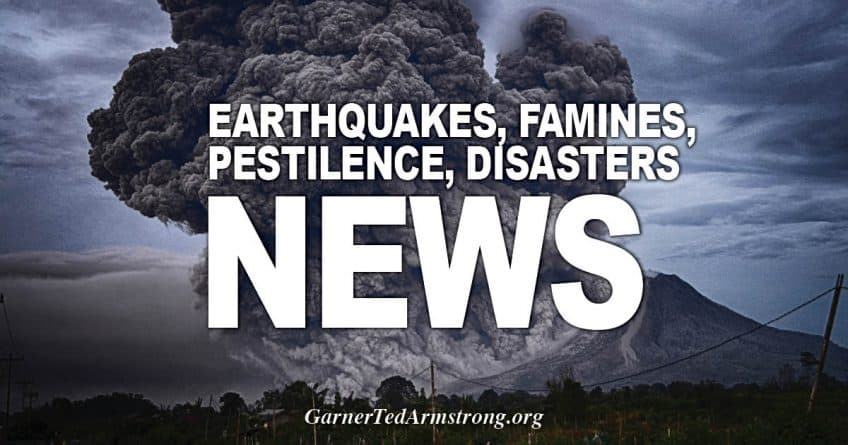PORT AU PRINCE, Haiti —A massive 7.2-magnitude earthquake struck Haiti on Saturday morning, leveling dwellings in southwest portions of the country and shaking buildings from the neighboring Dominican Republic to Jamaica and Cuba.
Officials and witnesses reported heavy damage and fatalities dozens of miles from the epicenter, 7.4 miles northeast of Saint-Louis du Sud, where the temblor struck at 8:29 a.m. At least 29 have been reported killed, with number of fatalities expected to rise.
Government officials, relief agencies and representatives from the United Nations were still assessing the damage, including via reconnaissance flights over southern and western parts of the country, as a wave of aftershocks continued to hit the island nation. But the sheer force of the temblor and a climbing death toll suggested a devastating new tragedy in the Western Hemisphere’s poorest country, which has lurched from crisis to crisis for years.
The disaster struck a month of the assassination of the president, leaving a hobbled, interim government in charge of a country so wracked by gang violence and a collapsing rule of law that observers have dubbed it Somalia in the Caribbean.
Now, 11 years after the devastating 2010 earthquake that claimed more than 220,000 lives, Haitians were again dealing with crushed bodies, collapsed buildings and overwhelmed local hospitals.
Ralph Simon, a radio station owner in Jeremie, a city of 30,000 in the Haitian southwest, said many homes and buildings had been leveled or damaged, including a local church. He said he saw two corpses in the rubble. “The impact of this is huge,” he said. “I was still in bed with my children and my wife. My wife had a heart attack, and I had to save her life. . . . There’s damage to houses. People are crying.”
Images on social media and witnesses portrayed scenes of devastation from collapsed structures, with officials saying residents were pouring into ill-equipped local hospitals, toting the injured in cars and the beds of pickup trucks. Neighbors aided rescue workers, trying to lift rubble and knock down walls to reach the stranded.
Haiti’s civil protection agency says at least 29 people killed in earthquake, according to the Associated Press. Preliminary disaster modeling from the U.S. Geological Survey (USGS) predicted hundreds of millions of dollars in damage and thousands of fatalities.
Silvera Guillaume, civil protection coordinator in the coastal city of Les Cayes, said the community’s resources were being overwhelmed.
“It’s a dire situation, people died. There are people right now under the rubble,” Guillaume said. “We deployed first responders to go and remove rubble, but we do not have enough first responders.”
Améthyste Arcélius, administrator of Immaculate Conception Hospital — the largest in Les Cayes — said that its facilities could not cope with the wounded and that it was in “desperate” need of personnel and medicines.
“There are lots of victims,” Arcélius said. “The hospital needs emergency drugs, health professionals of all categories. Lots of people are coming. The hospital is flooded with victims. We are issuing a call for help.”
At 8:29 a.m., Jabin Phontus, a 23-year-old agronomy student, said he felt his family home in Les Cayes begin to quake.
“I could see the walls breaking, it was scary,” he said by phone. “I took my sister and ran.”
His mother and brother also escaped their five-room home as it crumbled, leaving them scraped by falling debris.
“The house is partially destroyed, some walls are still up, but we can’t sleep inside,” he said. “We don’t know where to go now. We are seeking shelter. A lot of houses in the neighborhood are destroyed.”
As he spoke, he said a group of people near him were “trying to break down a wall to get to someone inside” a house.
Christy Delafield, spokesperson for the charity Mercy Corps, said the group was moving to mobilize a team to the area, but relief workers face logistical challenges. The main road to the area runs through gang infested territories just south of Port-au-Prince, leaving aid groups to focus on access by air. But the regional airport in Les Cayes is a rural airstrip with limited capacity, and was already being overwhelmed.
“We saw a similar situation with Hurricane Dorian” that struck the Bahamas in 2019, Delafield said. “There isn’t a lot of capacity in that area to handle assistance.”
Muhammad Bizimana, assistant country director for Care Haiti, said his organization was also facing logistical challenges, and was having to rely on “local staff” for assessments in the hardest hit areas, given the risks of traveling over land through gang-controlled regions south of Port-au-Prince.
“We’re exploring maritime transport,” he said.
Shelters for untold numbers homeless — especially in denser urban areas in the south and west — remained an immediate priority, he said.
But longer term, the quake had the potential to worsen a hunger crisis in the country. He said he had received reports of crops in the south destroyed by landslides in the aftermath of the earthquake.
“This has not been a good year for Haiti,” Bizimana said. “It’s one crisis after another.”
The reported magnitude from the USGS was greater than the catastrophic 7.0-magnitude earthquake that hit seven miles west of Port-au-Prince in 2010, which resulted in more than 220,000 casualties. The quake on Saturday struck farther away from the densely populated capital than the one in 2010, but the USGS noted that people in the most heavily hit areas largely reside in poorly constructed dwellings that are vulnerable to earthquake shaking.
The earthquake is set to deepen a humanitarian crisis in a country torn apart by hunger, poverty and violence that has never fully recovered from the 2010 quake. After the devastation of Hurricane Matthew in 2016, 1.4 million Haitians required humanitarian assistance.
U.N. agencies say 46 percent of the population is already experiencing acute or severe food insecurity — among the highest in the world. In the past, aid agencies have faced massive hurdles to transport aid south of the capital, given the open gang warfare on National Road 2 — the nation’s major western and southern artery.
Haiti also entered a new period of political instability in the aftermath of the assassination of President Jovenel Moïse in July.
Jose Luis Fernandez, the United Nations Food and Agriculture Organization representative in Haiti, said portions of southern Haiti were already facing “severe and acute” food shortages.
The earthquake “will worsen the food insecurity situation in the country, especially in areas of the south. There are pictures of many roads and bridges that have been destroyed. This is going to disrupt the flow of food.”
Haiti reeled from the quake even as the nation looked to the east with trepidation, with Tropical Storm Grace bearing down on the island nation. The storm, with maximum sustained winds of 45 miles per hour, was poised to arrive sometime on Monday, running a risk of heavy rainfall.
Faiola reported from Miami.
Haiti buries a president, but its long-term crisis lives on Haiti has a tragic history of disasters The long legacy of the U.S. occupation of Haiti
© Provided by The Washington Post
[Disclaimer]











